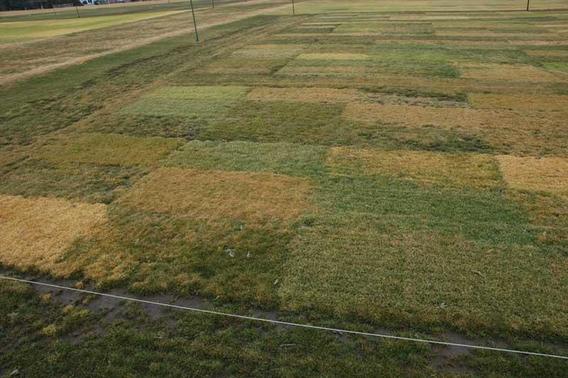
Turfgrass research
Spring 2024 at TROE Center
By Kim Tiber
It looks like spring is in full swing and things are getting busy at the Turfgrass Research and Outdoor Education (TROE) Center. We’ve recently gotten our irrigation system up and running for the year and have started mowing and applying herbicides and fertilizers.
Now hiring: UMN Assistant Professor, Managed Turfgrass Systems

Join our community of research and academic professionals as an Assistant Professor leading research on Turfgrass Science in the Department of Horticultural Science!
Now hiring: Assistant Professor - Managed Turfgrass Systems

The Department of Horticultural Science at the University of Minnesota seeks applicants for a full-time, tenure-track Assistant Professor faculty position in Turfgrass Science.
Let's talk turf! Part 1
This article was originally published in the January 2023 Master Gardener Volunteer News publication. Learn more about the Master Gardener program at the UMN Extension website. Let's talk turf is the first in a new series focusing on turfgrass topics from a social science perspective.
By Michael Barnes
Check out our updated Alumni page!
Want to catch up with what our past graduate students and postdocs are doing? Check out our newly updated Alumni page! Our alumni are doing great things in academia and industry and we expect many more great things from them in the future.
University of Minnesota Turfgrass team in the media – 3/17/22
Check out our team’s latest efforts in educating the public about our work. Articles about the UMN Turfgrass Science team were featured in the last several editions of the MGCSA's Hole Notes publication.
An old mower to the rescue
By Gary Deters
Like most turfgrass areas, a high percentage of our research plots need to be mowed consistently. Our creeping bentgrass research golf greens are cut at 0.125” and the task requires a special mower and reel setup. Many plots are cut at 2.5” to 3.5” with a push or riding mower, similar to what is used by a typical homeowner. So, with all the research plots and mowers we have, you might think we have everything we need to get the job done. In most cases that is true, but for a new trial conducted by members of the turf group, we had a bit of a problem.